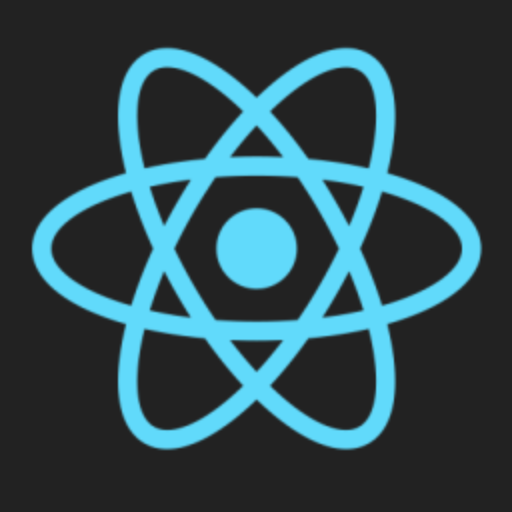React Hook Form-Form Handling Solution
AI-Powered Form Management Made Easy
How do I use React Hook Form with custom components?
What's the best way to validate forms in React?
Can you explain using React Hook Form with TypeScript?
How do I optimize performance with React Hook Form?
Related Tools
Load More
React Expert
Expert React JS developer offering in-depth advice and solutions

React
Your personal React assistant and code generator with a focus on responsive, beautiful, and scalable UI. Write clean code and become a much faster developer.

ReactJs Expert
Build beautiful, efficient React apps. Ask me anything, from basics to best practices.

React Expert
An expert in React, providing guidance on concepts, best practices, and code troubleshooting.

React Material UI Expert
Principal software dev expert in Material UI, React.js, HTML, CSS; consults official docs.

React.js expert
GPT trained on React.js source code
20.0 / 5 (200 votes)
Introduction to React Hook Form
React Hook Form is a library designed for managing form state and validation in React applications. Its primary purpose is to simplify the creation and handling of forms by leveraging React hooks. This library provides a simple and efficient way to manage form data, track changes, and validate inputs, thereby improving performance and user experience. The design of React Hook Form focuses on minimizing re-renders, reducing the amount of code needed, and enhancing the developer experience. It integrates seamlessly with other libraries and is highly customizable, making it suitable for a wide range of form requirements. For example, in a registration form scenario, React Hook Form can handle input validation and state management without requiring extensive boilerplate code, thus speeding up the development process and ensuring a smoother user experience.

Main Functions of React Hook Form
useForm
Example
The useForm hook provides essential methods for handling form state, such as register, handleSubmit, and reset. For instance, you can use register to link input fields to the form state and handleSubmit to process the form data on submission.
Scenario
In a login form, useForm can be used to register email and password fields, handle form submission, and reset the form after a successful login.
Controller
Example
The Controller component allows integration with third-party controlled components like React Select, Material-UI, and others. It ensures that these components work seamlessly with React Hook Form's validation and state management.
Scenario
In a complex form requiring a dropdown menu with dynamic options from an API, the Controller component can manage the dropdown state and ensure it integrates smoothly with the form's overall validation logic.
useWatch
Example
The useWatch hook enables tracking the value of specified form fields. This is useful for conditional rendering or dynamic validation based on other fields' values.
Scenario
In a multi-step form, useWatch can monitor the progress of form completion and enable or disable the next step button based on the current step's validation status.
Ideal Users of React Hook Form
Frontend Developers
Frontend developers, especially those working with React, are the primary users of React Hook Form. They benefit from the library's ability to manage complex form states with minimal code, improving efficiency and reducing the potential for bugs. The use of hooks aligns well with modern React practices, making it a natural choice for developers.
Development Teams in Agile Environments
Teams working in agile environments, where rapid development and iteration are crucial, find React Hook Form particularly beneficial. Its simplicity and performance optimizations allow for quicker form implementation and updates, facilitating faster sprints and more responsive adjustments based on user feedback.

Steps to Use React Hook Form
Visit aichatonline.org for a free trial without login, also no need for ChatGPT Plus.
Start by visiting aichatonline.org where you can access a free trial without the need for login credentials or a ChatGPT Plus subscription.
Install React Hook Form
Use npm or yarn to install React Hook Form in your project. Run `npm install react-hook-form` or `yarn add react-hook-form` in your project directory.
Set up a basic form
Create a form component and use the `useForm` hook from React Hook Form. Initialize the hook and connect it to your form elements using `ref` and `onSubmit` handlers.
Integrate validation
Define validation rules for your form fields using the `register` method, and provide feedback to users by leveraging the `errors` object returned by the `useForm` hook.
Handle form submission
Handle the form data submission by defining an `onSubmit` function, which will be triggered upon successful validation, allowing you to process or send the form data as needed.
Try other advanced and practical GPTs
CATIA : CAA Automatıon
AI-powered design automation for CATIA.

Wolverine Course Design Assistant
AI-driven support for course design.

Optimized Readability Writer
AI-Powered Readability Enhancement

SmartOSC SEO-optimized content writer
AI-powered content creation for SEO success

Learn English by Pronunciation
AI-powered English pronunciation improvement

AI Tutor by GeniusTutor
AI-Powered Tutoring for Every Student

图像解释器
AI-powered tool for visual term explanations

TikTok Ads Virtual Assistant
AI-powered TikTok Ads optimization.

Software Test - Manual Test Cases and BDD Scenario
AI-powered testing and BDD scenarios generation.

Research Paper Summarizer
AI-powered summarization for research papers.

Tumbler Artisan
AI-powered design tool for creators.
@Login - Social Login
AI-powered secure login with Google integration

- Feedback
- Surveys
- Registration
- Checkout
- Contact
React Hook Form Q&A
What is React Hook Form?
React Hook Form is a library that helps you manage and validate forms in React applications. It simplifies the process by using hooks and minimizes re-renders to improve performance.
How does React Hook Form improve performance?
React Hook Form optimizes performance by reducing the number of re-renders during user interactions. It does this by leveraging uncontrolled components and only triggering re-renders when necessary.
Can React Hook Form be used with other UI libraries?
Yes, React Hook Form is compatible with various UI libraries such as Material-UI, Ant Design, and Bootstrap. You can easily integrate it with these libraries by using their form components.
How do you handle form validation with React Hook Form?
Form validation in React Hook Form is handled by defining validation rules within the `register` method. You can specify rules such as required fields, min/max length, pattern matching, and custom validation functions.
Is it possible to handle complex forms with React Hook Form?
Yes, React Hook Form is designed to handle complex forms efficiently. It supports nested fields, arrays, dynamic fields, and conditional fields, making it suitable for advanced form scenarios.